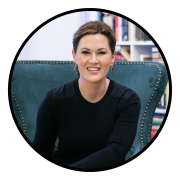Picture courtesy of NBC News
I send out an email almost daily that goes to clients, former clients and future clients.
On Sunday, I sent a media tip that many would say is obvious.
Kind of a “no duh.”
I even called it “unsexy.”
But au contraire, my friend…

I’m sure you’ve heard by now that tickets to President Donald J. Trump’s first State of the Union address originally said State of the “Uniom.”
The tickets issued to lawmakers’ spouses and guests contained the typo. The tickets were printed by the Office of the Sergeant at Arms and Doorkeeper. They had to be reissued.
“It was corrected immediately, and our office is redistributing the tickets,” a spokesman for the sergeant at arms told Agence France-Presse.
One news outlet reported that the State of the Union tickets actually had two typos: In addition to “Uniom,” they referred to the “Visitor’s Gallery.” It’s actually the Visitors’ Gallery.
This isn’t the first time. Not long after President Trump was sworn into office in January of last year, the White House misspelled British Prime Minister Theresa May’s name—three times. THREE times. Her name is “Theresa” May, but they spelled it “Teresa” May. “Teresa” (with no h) May, happens to be a model and porn actress.
The original version of Trump’s presidential inauguration poster also featured a typo. The message over his photo read “No dream is too big, no challenge is to great,” with the second “o” missing from the second “too.”
Then there was the time the White House issued a statement before Trump’s trip to Israel, saying that he hoped the visit would “promote the possibility of lasting peach,” instead of “peace.” Yes, we all love the fuzzy fruit… but, come on.
And the White House Snapchat account referred to Betsy DeVos as the “Secretary of Educatuon.” Awesome.
Of course, Mr. Trump himself has had his own share of typos like the famous “covfefe.”
It happens.
It’s not uncommon.
And, it’s totally unacceptable.
Actually… he hears them.
I read them to my husband before I hit “publish.”
If he’s not around, I read them aloud a few times.
Sometimes he helps me nail down a point.
Most times he just listens and says “great!”
I love that.
- Have someone else read everything you write before it’s sent out.
- Always read your work out loud before you send it.
I’m talking about social media posts, blogs, big emails to your staff (you never know what might be forwarded to the media), speeches, quotes you’re giving to a magazine or newspaper… you get the point.
Here’s why I do it:
You’re way too important for me not to have another set of eyes on these emails.
I’m not perfect.
Here’s why you should do it:
Every bit of information that’s sent out or posted is a reflection of you and your company.
You’re not perfect.
Every bit of information that’s sent out or posted is a reflection of you and your company.
You’re not perfect.
In our beautiful imperfections… we miss stuff.
Our brain sometimes moves so quickly – we actually will “see” the right word that should be there… even though there is a misspelling or the wrong word there entirely.
When we read our work aloud — we catch more errors.
When you have someone else quickly do a once-over… it’s even better.
Told you it’s not very sexy.
But I guarantee – you’ll be more effective in sharing your story.
Kathryn Janicek is a three-time Emmy Award-winning television producer with 20 years of experience working in newsrooms across the country. Kathryn coached talent, producers, and writers before switching her focus on helping entrepreneurs and corporate executives. Now, based in her home city of Chicago, she is a much sought-after media coach and public speaking trainer who will help you produce the best YOU. Click HERE now to book a complimentary 30-minute consultation with Kathryn.





